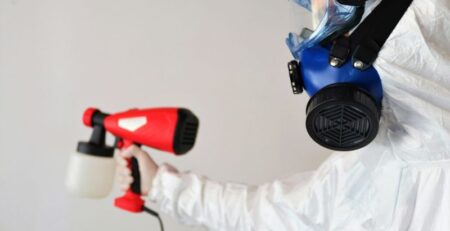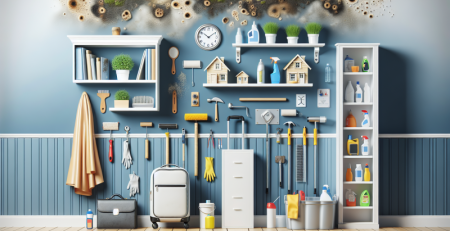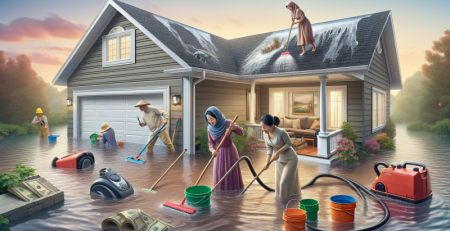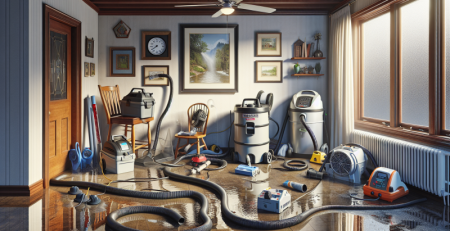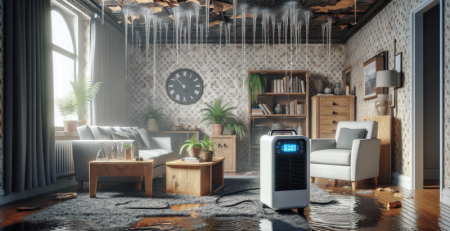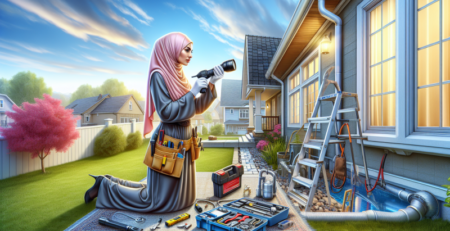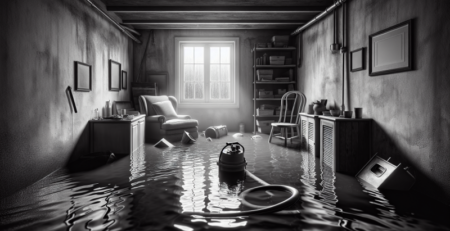How to Spot Water Damage Before It Spreads
Water damage can be a homeowner’s worst nightmare, often leading to costly repairs and extensive restoration efforts. At Kraus Restoration, NJ’s leaders in water damage recovery, we understand the importance of early detection in preventing further issues. Our mission is to assist those who have suffered property damage due to water, mold, fire, or smoke, ensuring a swift return to normalcy. In this blog, we will guide you on how to spot water damage before it spreads, empowering you to take proactive measures. From identifying subtle signs of moisture to understanding the potential sources of leaks, our expert insights will help you protect your home. With our 24/7 emergency services and IICRC certified professionals, Kraus Restoration is here to provide immediate assistance and comprehensive solutions for all your water damage needs. Don’t wait for the problem to escalate—learn how to recognize the early warning signs and safeguard your property today.
Key Signs of Water Damage to Look For
Water damage can be a silent but destructive force in homes and buildings, often going unnoticed until it has caused significant harm. Recognizing the early signs of water damage is crucial for homeowners and property managers alike, as it allows for timely intervention and can save thousands of dollars in repairs. Here are some key indicators to watch for that may suggest water damage is present in your property.
One of the most obvious signs of water damage is the presence of stains on walls or ceilings. These stains can appear as yellowish or brownish spots and are often indicative of leaks from plumbing, roofs, or windows. If you notice these discolorations, it is essential to investigate further, as they can worsen over time and lead to structural issues.
Another common sign is the presence of mold or mildew. According to the Environmental Protection Agency (EPA), mold can begin to grow within 24 to 48 hours of water exposure. If you detect a musty odor or see mold growth in areas such as bathrooms, basements, or around windows, it is a clear indication that moisture is present and needs to be addressed. Mold not only damages surfaces but can also pose health risks to occupants.
Peeling or bubbling paint and wallpaper can also signal water damage. When walls absorb moisture, the paint or wallpaper may lose its adhesion, leading to unsightly bubbles or peeling. This not only affects the aesthetics of your home but can also indicate deeper issues with moisture intrusion.
In addition to visual signs, changes in flooring can also be a red flag. Warping, buckling, or discoloration of hardwood floors, tiles, or carpets can suggest that water has infiltrated the area. For instance, hardwood floors may swell and separate, while carpets may feel damp or develop stains. If you notice any of these changes, it is crucial to investigate the source of the moisture.
Another subtle yet significant sign of water damage is an increase in your water bill. If you notice an unexplained spike in your water usage, it may indicate a hidden leak somewhere in your plumbing system. Regularly monitoring your water bill can help you catch leaks early before they lead to more extensive damage.
In some cases, you may also notice a change in the texture or appearance of your walls. If drywall feels soft or appears to be sagging, it may have absorbed water and is at risk of crumbling. This is particularly common in areas near plumbing fixtures or where water may have leaked from above.
Finally, keep an eye on your home’s foundation and exterior. Cracks in the foundation or signs of erosion around the base of your home can suggest that water is pooling or seeping into the structure. Additionally, check for any signs of water pooling in your yard, as this can indicate drainage issues that may lead to water damage over time.
In conclusion, being vigilant about the signs of water damage is essential for maintaining the integrity of your home. Regular inspections and prompt action can prevent minor issues from escalating into major repairs. If you suspect water damage, it is advisable to consult with professionals who specialize in water cleanup and restoration to assess the situation and provide appropriate solutions. Remember, early detection is key to protecting your property and ensuring a safe living environment.
For more information on how to manage water damage and other restoration services, visit our services page or contact us for assistance.
Preventive Measures to Protect Your Home from Water Damage
Water damage can be a homeowner’s worst nightmare, leading to costly repairs, structural issues, and even health hazards due to mold growth. To safeguard your home from the potential devastation of water damage, it is essential to implement a series of preventive measures. These proactive steps can help you identify vulnerabilities in your home and address them before they escalate into significant problems.
First and foremost, regular inspections of your property are crucial. Check your roof for missing or damaged shingles, as well as any signs of wear and tear. A compromised roof can lead to leaks that allow water to infiltrate your home. Additionally, inspect your gutters and downspouts to ensure they are clear of debris. Clogged gutters can cause water to overflow and seep into your foundation, leading to serious water damage. It is advisable to clean your gutters at least twice a year, particularly in the spring and fall.
Another important area to monitor is your plumbing system. Leaky pipes, faucets, and toilets can contribute to water damage over time. Regularly check for signs of leaks, such as water stains on walls or ceilings, and address any issues promptly. Consider upgrading to high-quality plumbing fixtures that are less prone to leaks and wear. Furthermore, it is wise to know the location of your main water shut-off valve. In the event of a significant leak or burst pipe, being able to quickly shut off the water supply can minimize damage.
Pay attention to your home’s foundation as well. Cracks in the foundation can allow water to seep into your basement or crawl space. Inspect the exterior of your home for any cracks or gaps and seal them with appropriate materials. Additionally, ensure that the ground around your home slopes away from the foundation to facilitate proper drainage. This simple adjustment can prevent water from pooling near your home and reduce the risk of water damage.
Inside your home, consider investing in a sump pump, especially if you live in an area prone to flooding. A sump pump can help remove excess water from your basement, keeping it dry and preventing mold growth. Regularly test your sump pump to ensure it is functioning correctly, and consider installing a battery backup system to keep it operational during power outages.
Another preventive measure is to monitor your appliances that use water, such as washing machines, dishwashers, and refrigerators with ice makers. These appliances can develop leaks over time, so it is essential to check hoses and connections regularly. Replace any worn or damaged hoses, and consider using stainless steel hoses instead of rubber ones, as they are more durable and less likely to burst.
Humidity control is also vital in preventing water damage. High humidity levels can lead to condensation, which can cause mold growth and damage to your home. Use dehumidifiers in areas prone to moisture, such as basements and bathrooms, and ensure proper ventilation in these spaces. Installing exhaust fans in bathrooms and kitchens can help reduce humidity levels and prevent moisture buildup.
If you have a fireplace, ensure that the chimney is properly maintained. A damaged chimney can allow water to enter your home, leading to leaks and water damage. Schedule regular inspections and cleanings to keep your chimney in good condition.
In addition to these measures, consider creating an emergency plan for water damage. Familiarize yourself with the steps to take in the event of a flood or significant leak. This plan should include knowing how to shut off your main water supply, having emergency contact numbers readily available, and knowing when to call professionals for help.
Lastly, investing in a comprehensive home insurance policy that covers water damage can provide peace of mind. Review your policy to understand what is covered and consider additional coverage if necessary. This step can help protect your financial investment in your home and provide assistance in the event of water damage.
By taking these preventive measures, you can significantly reduce the risk of water damage in your home. Regular inspections, proper maintenance, and proactive planning are key to protecting your property. For more information on how to safeguard your home from water damage, visit our about page or explore our services for professional assistance. If you ever experience water damage, do not hesitate to reach out through our contact page for expert help.
In conclusion, being proactive in identifying water damage is crucial for maintaining the integrity of your home and preventing costly repairs down the line. By regularly inspecting areas prone to moisture, such as basements, attics, and around plumbing fixtures, you can catch early signs of water damage before they escalate. Look for telltale signs like discoloration, mold growth, and unusual odors, and don’t hesitate to investigate further if you suspect a leak. Additionally, staying informed about your home’s plumbing and roofing systems can help you anticipate potential issues. Remember, the sooner you address water damage, the less likely it is to spread and cause significant harm. By following these tips and remaining vigilant, you can protect your home and ensure a safe, healthy living environment for you and your family.


